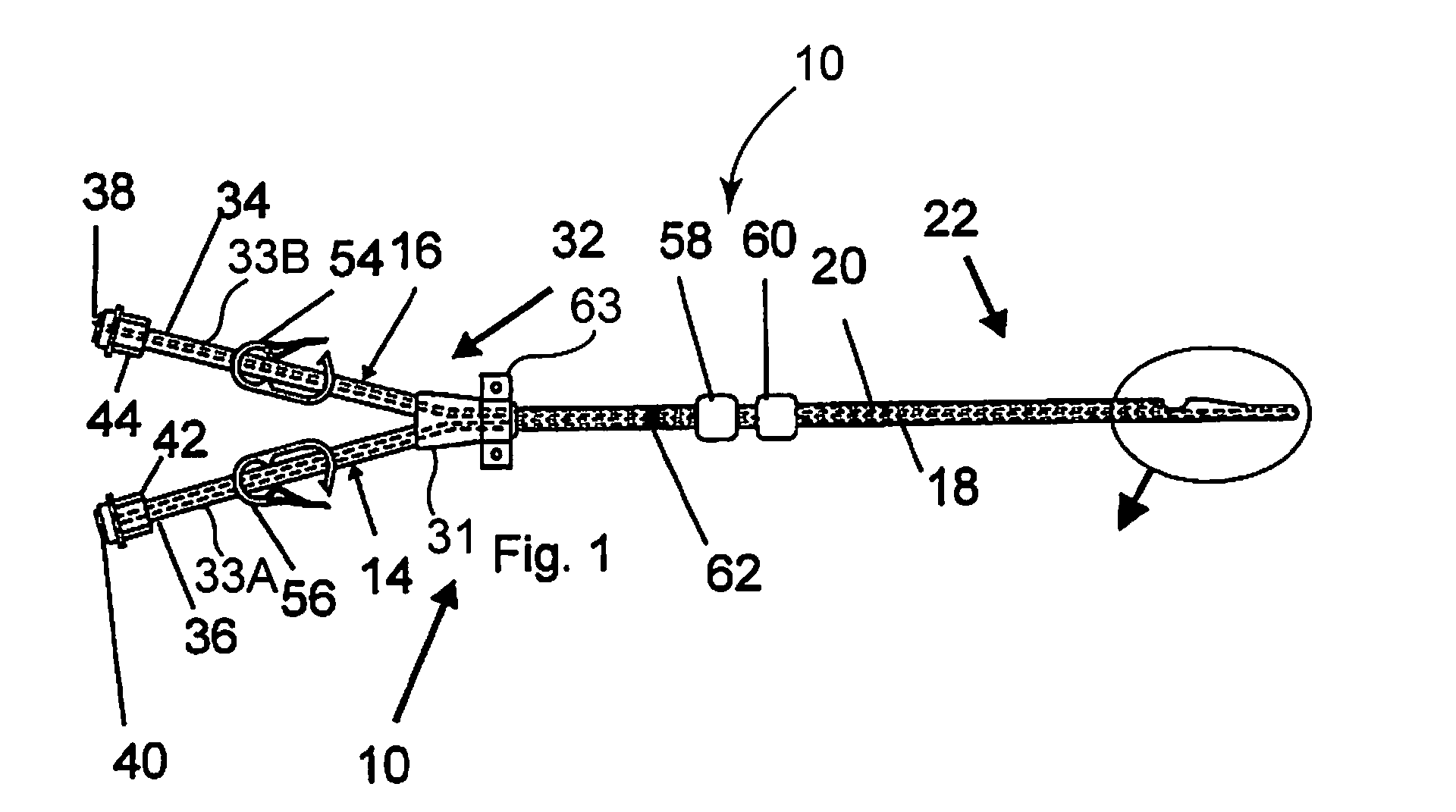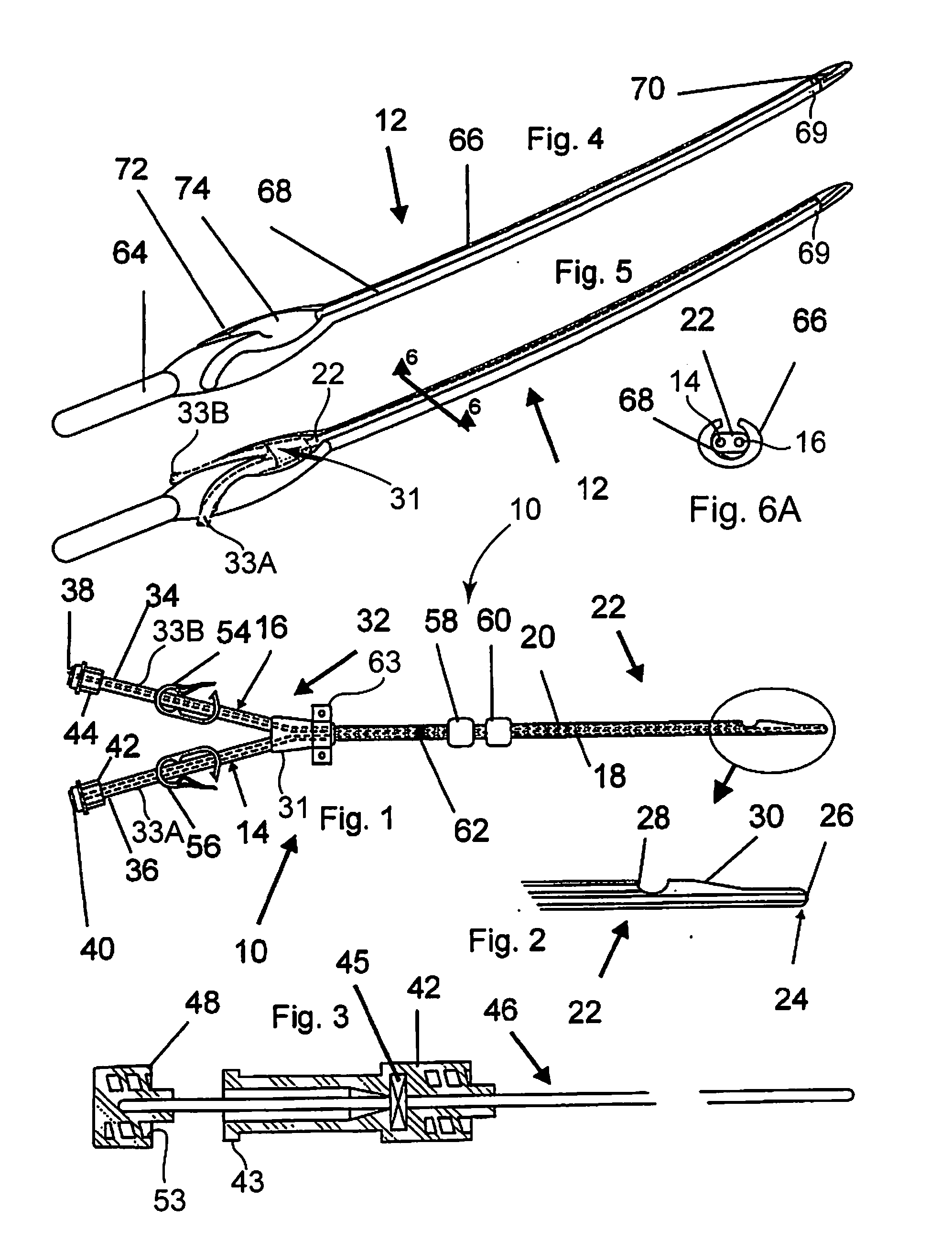Catheter and tunneling device therefor
a tunneling device and catheter technology, applied in the field of catheters, can solve the problems of catheter uselessness, loss of catheter function, and clogged lumen, and achieve the effects of reducing long term infections, preventing clogging of lumens, and improving long term health benefits
- Summary
- Abstract
- Description
- Claims
- Application Information
AI Technical Summary
Benefits of technology
Problems solved by technology
Method used
Image
Examples
Embodiment Construction
[0035]Referring now to the drawings, the present invention in one exemplary embodiment is generally directed to a catheter 10 for introduction and removal of fluids from a body B and a tunneling device 12 to more readily enable insertion of the catheter 10. The catheter 10 includes a first lumen 14 for removing fluid from the body B and another lumen 16 for delivering fluid to the body. The lumens 14 and 16 include distal lumen segments 18, 20, respectively, which are integrally connected as part of a first end 22 of the catheter 10 and extend along side one another. Preferably, the catheter 10 is made of a biologically inert, somewhat flexible, material, such as, but not limited to, a urethane or polyurethane-based material, such as CARBOTHANE® (available from Thermedics Corp.), polyether block amides, such as PEBAX® (available from Arkema Inc.) or other material known to those skilled in the art that possesses sufficient bioinertness, durability, flexibility and moldability or ext...
PUM
 Login to View More
Login to View More Abstract
Description
Claims
Application Information
 Login to View More
Login to View More - R&D
- Intellectual Property
- Life Sciences
- Materials
- Tech Scout
- Unparalleled Data Quality
- Higher Quality Content
- 60% Fewer Hallucinations
Browse by: Latest US Patents, China's latest patents, Technical Efficacy Thesaurus, Application Domain, Technology Topic, Popular Technical Reports.
© 2025 PatSnap. All rights reserved.Legal|Privacy policy|Modern Slavery Act Transparency Statement|Sitemap|About US| Contact US: help@patsnap.com



